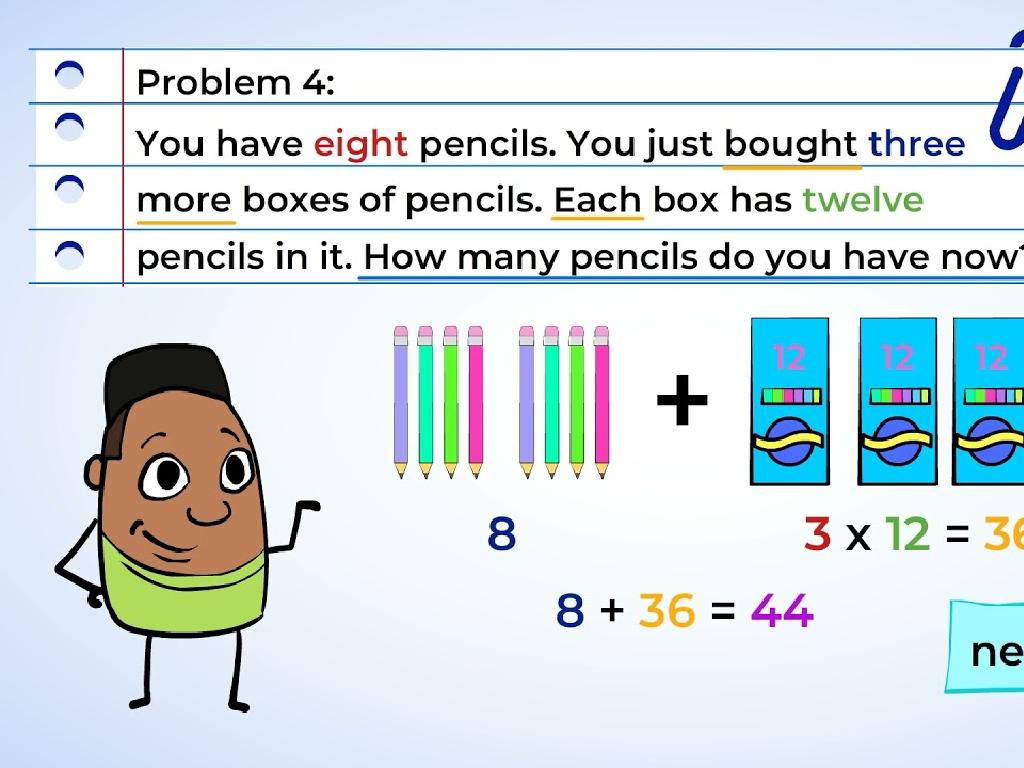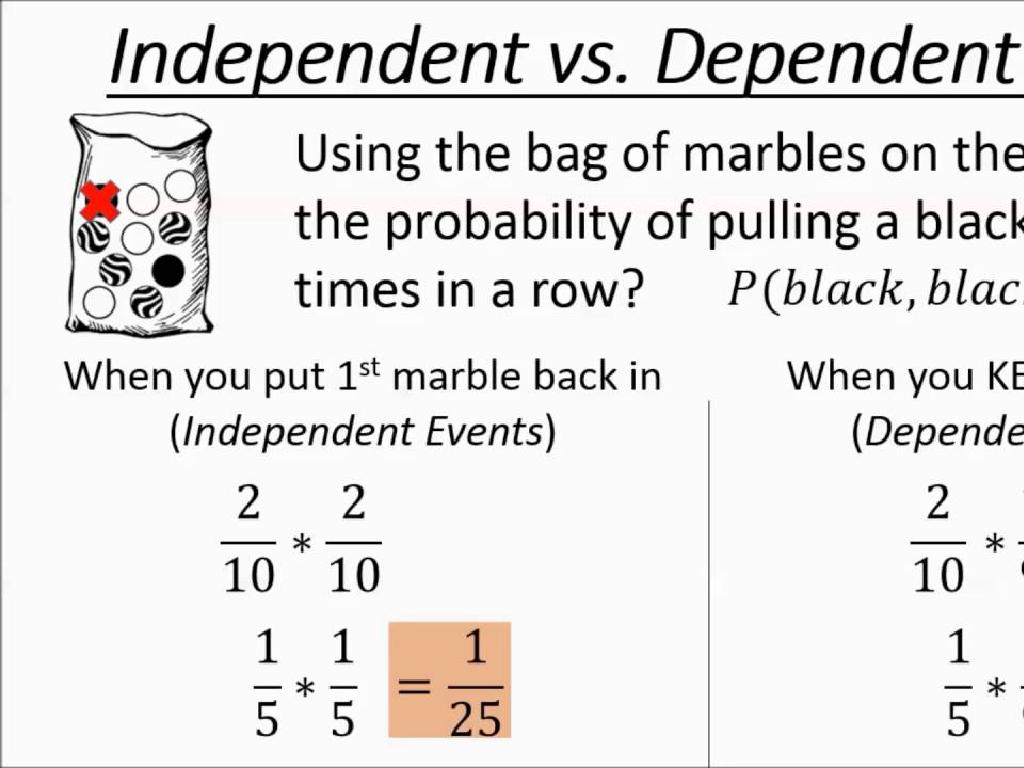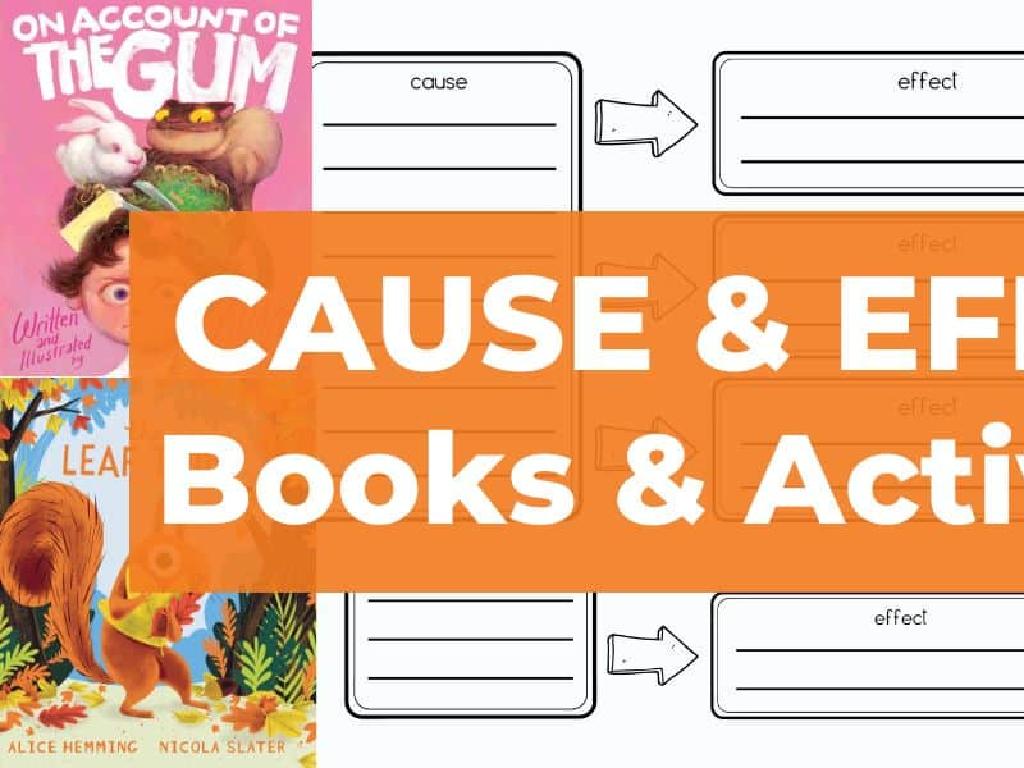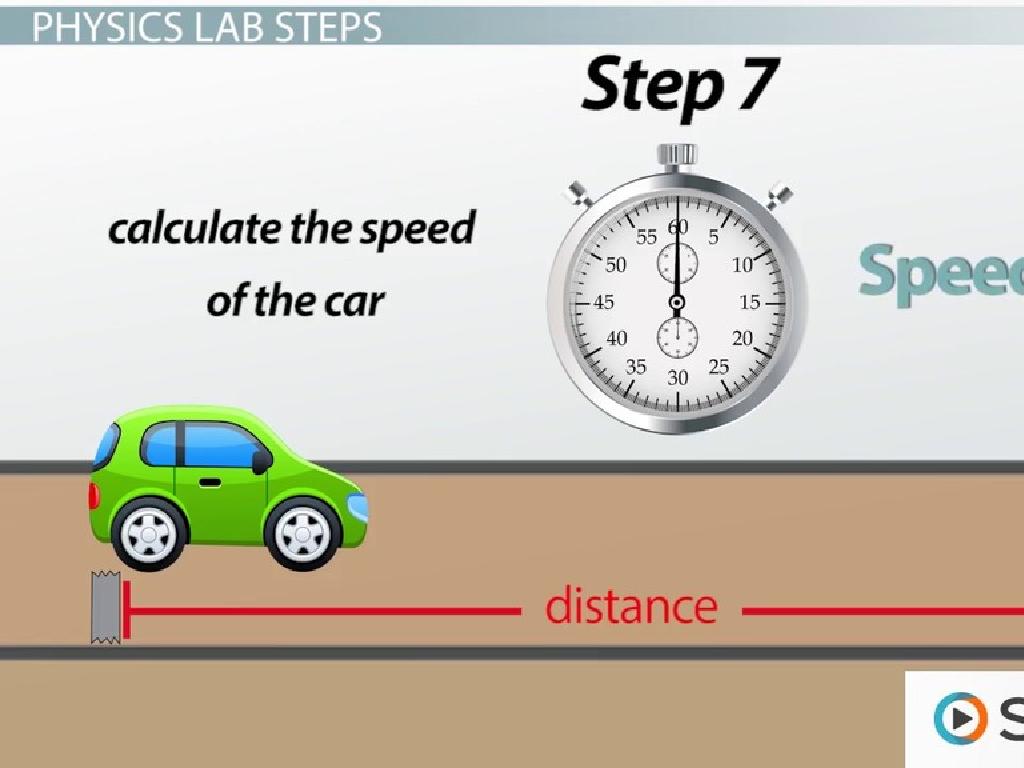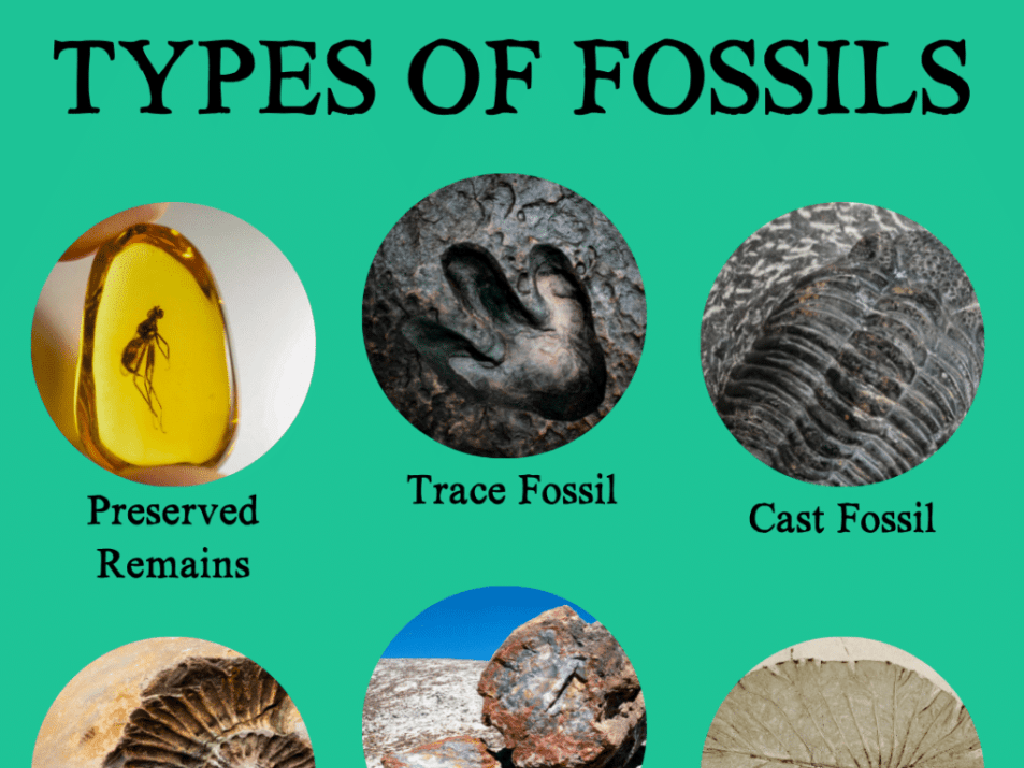What Are Atoms And Chemical Elements?
Subject: Science
Grade: Sixth grade
Topic: Atoms And Molecules
Please LOG IN to download the presentation. Access is available to registered users only.
View More Content
Welcome to the World of Atoms!
– Atoms: Matter’s building blocks
– Atoms are tiny particles that make up all materials.
– Chemical elements: Varieties of atoms
– Elements are types of atoms, like oxygen or hydrogen.
– Atoms’ role in forming matter
– Everything around us is made from atoms combining.
– Significance of atoms in science
|
This slide introduces the fundamental concepts of atoms and chemical elements, which are the building blocks of all matter. Atoms are the smallest units of matter that retain the properties of an element. Chemical elements are pure substances consisting of only one type of atom. Understanding atoms is crucial because they form the basis of chemistry, the study of matter and its interactions. This knowledge is foundational for all scientific disciplines and has practical applications in fields like medicine, engineering, and environmental science. Encourage students to think about how everything they interact with is made up of atoms, even themselves!
Exploring the Building Blocks: Atoms
– Atom defined
– An atom is the basic unit of a chemical element.
– Smallest matter unit
– Atoms are so tiny, they can’t be seen with a regular microscope.
– Composed of protons, neutrons, electrons
– Protons have a positive charge, neutrons no charge, and electrons a negative charge.
– Foundation of everything physical
|
This slide introduces the concept of atoms to sixth-grade science students. Begin with the definition of an atom as the smallest constituent unit of ordinary matter that constitutes a chemical element. Emphasize that every solid, liquid, gas, and plasma is composed of neutral or ionized atoms. Highlight the three main subatomic particles: protons, neutrons, and electrons, explaining their charges and roles within the atom. Use analogies to help students grasp the size and structure of atoms, such as comparing an atom to a miniature solar system where electrons orbit the nucleus made up of protons and neutrons. This foundational knowledge sets the stage for understanding chemical elements and the complex world of molecules and compounds.
Exploring the Atom
– Protons: Positive nucleus particles
– Protons define the element’s identity and charge.
– Neutrons: Neutral nucleus particles
– Neutrons stabilize the nucleus, affecting the isotope.
– Electrons: Negative orbiting particles
– Electrons determine chemical behavior and bonding.
|
This slide introduces students to the basic components of an atom, which is the fundamental building block of matter. Each atom consists of a nucleus containing protons and neutrons, with electrons orbiting around it. Protons carry a positive charge and are crucial in defining the chemical element and its place in the periodic table. Neutrons have no charge and contribute to the mass of the atom; they also play a role in the stability of the nucleus. Electrons, which are negatively charged, orbit the nucleus and are involved in chemical reactions and bonding. Understanding the structure of an atom is essential for comprehending how elements interact to form the vast array of substances in the universe. Encourage students to think of the atom as a tiny solar system, with the nucleus as the sun and electrons as planets in orbit.
Exploring Chemical Elements
– Definition of chemical elements
– Basic substances that cannot be broken down
– Unique proton numbers
– Atomic number represents the number of protons
– Examples: H, O, C
– Hydrogen (H), Oxygen (O), Carbon (C) are building blocks of molecules
– Significance in science
|
Chemical elements are the fundamental materials of which all matter is composed. This slide introduces the concept that each element is distinguished by the number of protons in its nucleus, known as the atomic number. Common examples like Hydrogen, Oxygen, and Carbon are provided to help students relate to elements they may already be familiar with. Emphasize the importance of elements in forming everything around us, from the air we breathe to the composition of living organisms. Encourage students to think about how these elements combine to form the diverse array of substances in the world.
The Importance of Chemical Elements
– Elements are building blocks
– Everything is made of elements, like oxygen in water.
– They define matter’s composition
– Knowing elements tells us what things are made of.
– Crucial for science and industry
– Used in making electronics to medicines.
– Enhance our understanding of the world
|
This slide aims to highlight the significance of chemical elements in everyday life and their broader impact on science and industry. By understanding that everything around us is composed of elements, students can begin to appreciate the fundamental role elements play in the composition of matter. Discuss how elements are used in various fields, from creating the technology we use daily to developing life-saving medicines. Encourage curiosity about how the discovery and use of elements have shaped the modern world. This foundational knowledge sets the stage for exploring the periodic table and the properties of individual elements in future lessons.
Atoms in Action: Building Blocks of Matter
– Atoms combine to form molecules
– Atoms are like puzzle pieces that come together to create a bigger picture.
– Chemical bonds connect atoms
– Think of chemical bonds as super strong magnets holding atoms in place.
– Examples: H2O, O2
– H2O is water, vital for life. O2 is oxygen, what we breathe.
– Significance of molecules in life
|
This slide aims to explain how individual atoms interact to form more complex structures called molecules, which are the foundation of all matter. Emphasize that atoms can bond together in different ways to form molecules, and these molecules can have vastly different properties and functions. Use water (H2O) and oxygen (O2) as familiar examples of molecules to illustrate the concept. Explain that chemical bonds are the forces that keep atoms together within a molecule. Highlight the importance of molecules in everyday life, from the air we breathe to the water we drink. Encourage students to think of other common molecules and how they might be important in daily life or in the natural world.
Let’s Practice: Building Molecule Models
– Class activity: Model construction
– Represent atoms with balls
– Different colored balls for different elements
– Use sticks for bonds
– Sticks will show how atoms bond
– Create H2O and CO2 models
– Water has 2 hydrogen (white) and 1 oxygen (red), CO2 has 1 carbon (black) and 2 oxygen (red)
|
This hands-on activity is designed to help students visualize the concept of molecules and how atoms bond to form compounds. Provide a variety of colored balls to represent different atoms and sticks to represent the bonds. Guide the students to use two white balls for hydrogen and one red ball for oxygen to create a water molecule model. For carbon dioxide, they should use one black ball for carbon and two red balls for oxygen. Encourage them to notice the different shapes and structures of these two molecules. This will help them understand that molecules have specific geometric arrangements. Have enough materials for the class and consider pairing students to foster collaboration. Possible variations of the activity could include building models of other simple molecules, such as methane (CH4) or oxygen (O2).
Atoms & Elements: Review and Q&A
– Recap atoms and elements
– Atoms are building blocks; elements are types of atoms, like oxygen.
– Encourage student questions
– Answering your queries
– Relevance to daily life
– Elements make up everything, like water (H2O) being hydrogen and oxygen.
|
This slide aims to consolidate the students’ understanding of atoms and chemical elements. Begin with a brief recap of the key points covered in previous lessons, emphasizing that atoms are the smallest units of matter and elements are pure substances made of only one type of atom. Open the floor for students to ask any questions they have, fostering an interactive environment. Address their queries with clear explanations. Finally, discuss the practical implications of this knowledge in everyday life, such as the composition of water, the air we breathe, and the materials around us. This will help students appreciate the relevance of chemistry in their daily experiences.
Homework: Explore a Chemical Element
– Research a periodic table element
– Write a paragraph on its properties
– Include details like atomic number, state of matter, and reactivity
– Describe the element’s uses
– Mention how it’s used in everyday life or in industry
– Share your findings in class
|
This homework assignment is designed to deepen students’ understanding of chemical elements by having them conduct independent research on one element from the periodic table. Students should look for information on the element’s properties, such as its atomic number, whether it’s a metal, nonmetal, or metalloid, its state at room temperature, and its reactivity with other elements. Additionally, they should explore the element’s practical uses in everyday life or various industries. This task will help students make connections between abstract concepts and real-world applications. Tomorrow, each student will have the opportunity to present their research to the class, fostering a collaborative learning environment where they can learn from each other’s findings.

